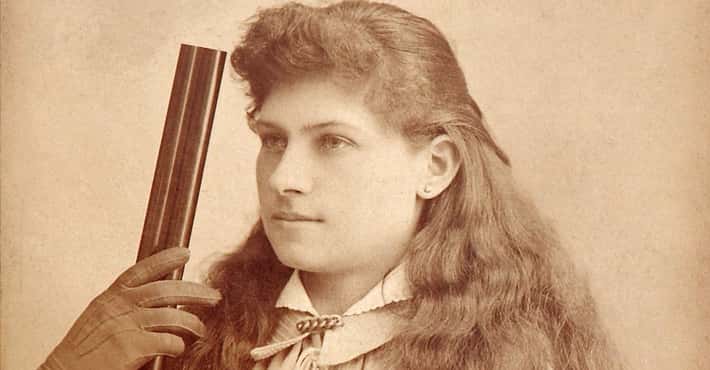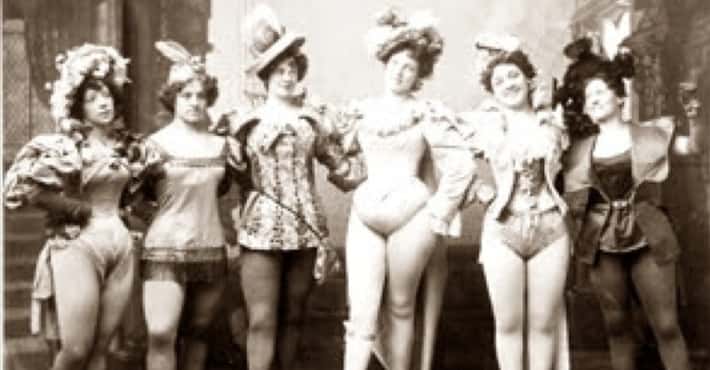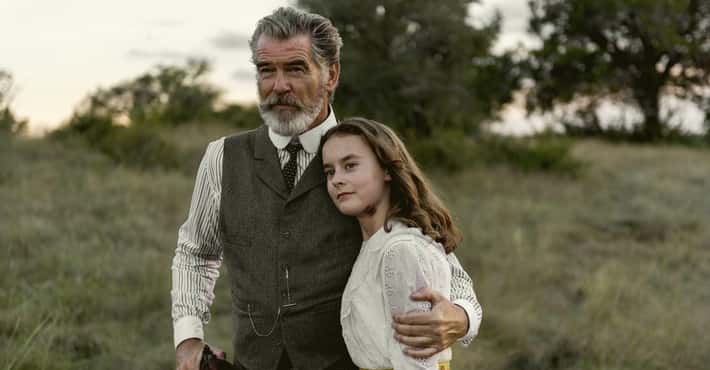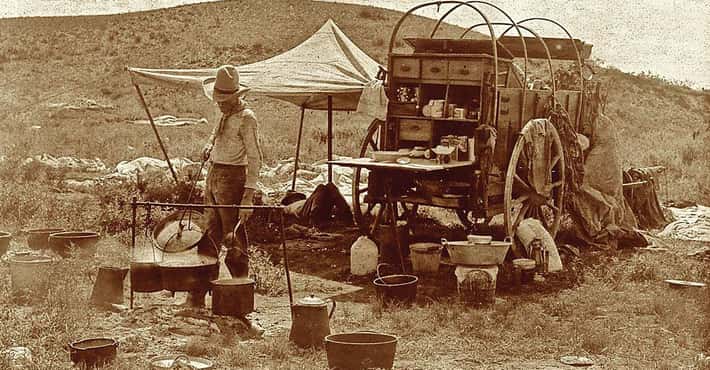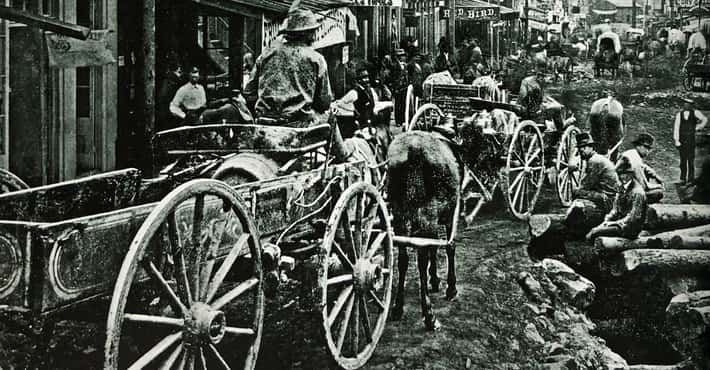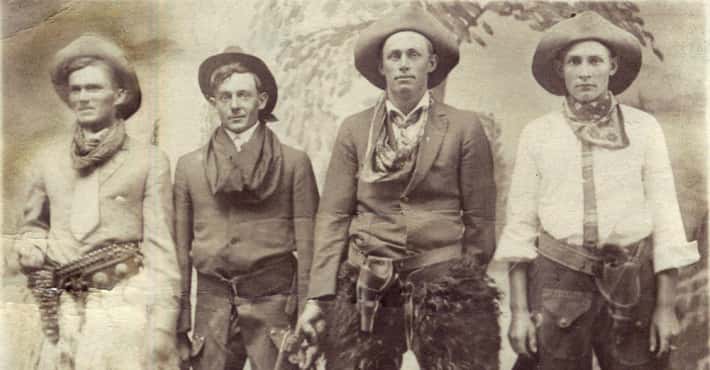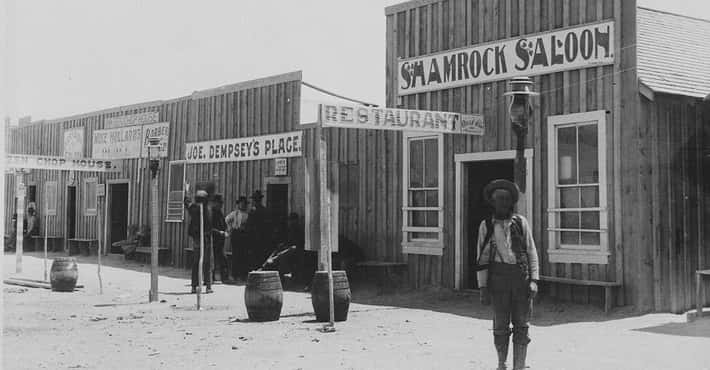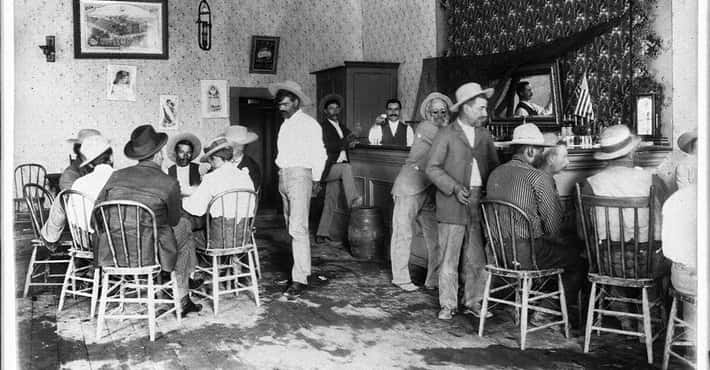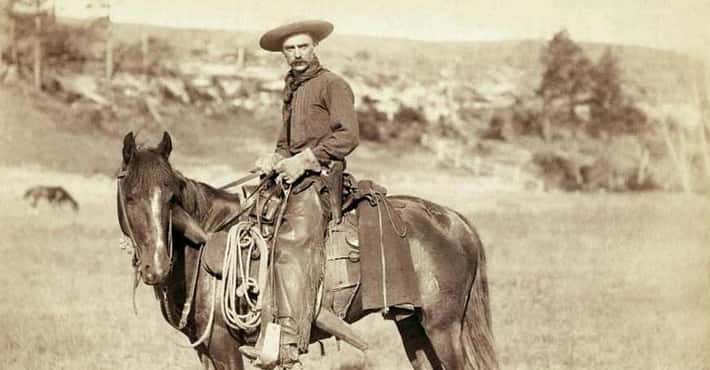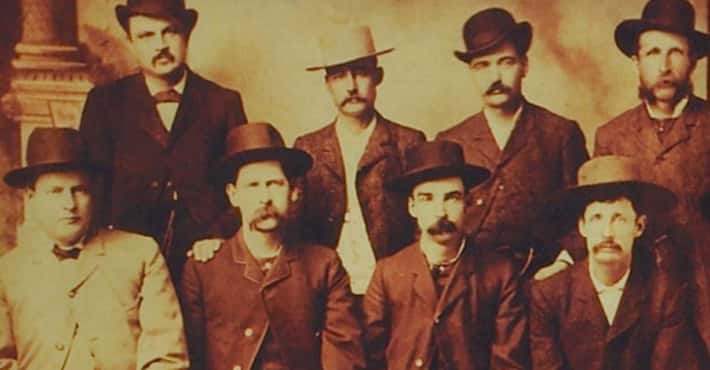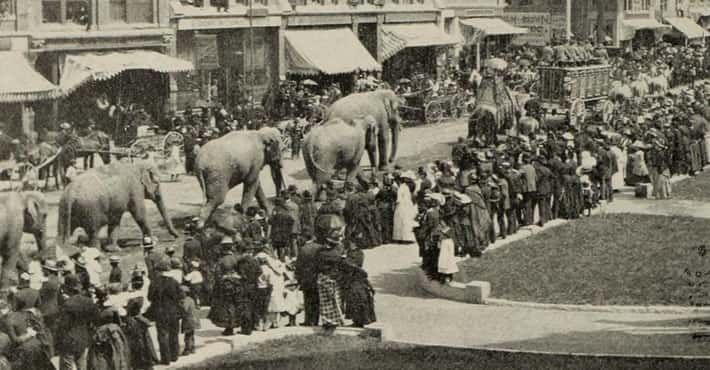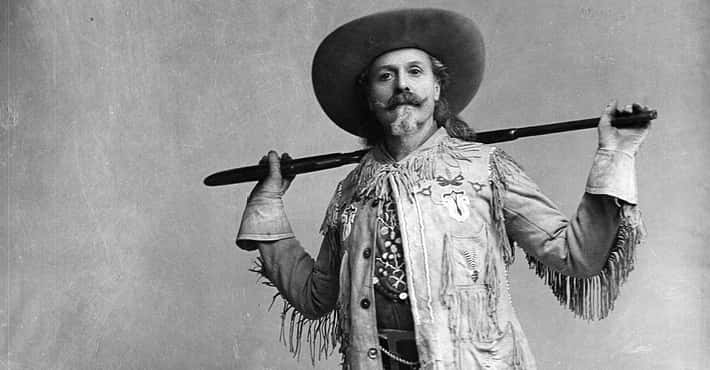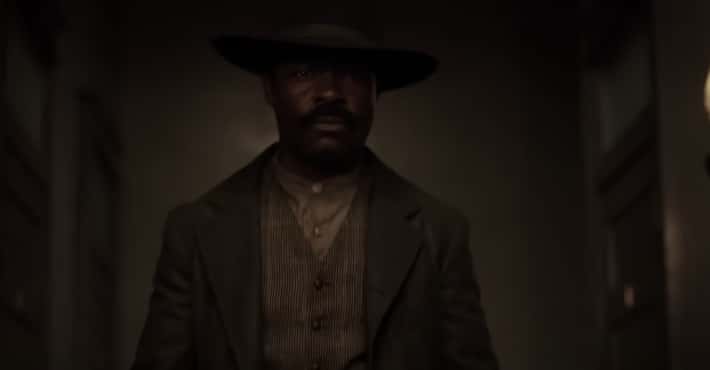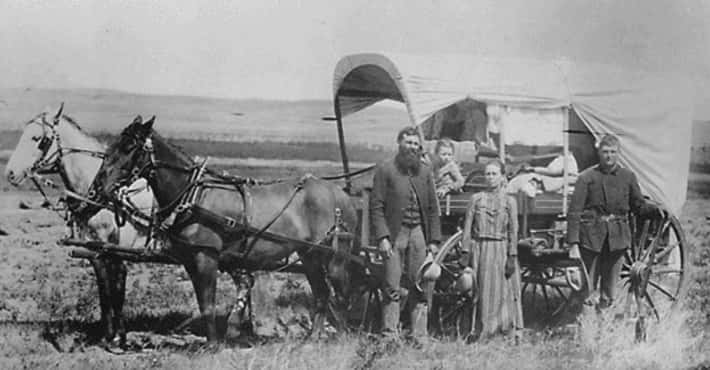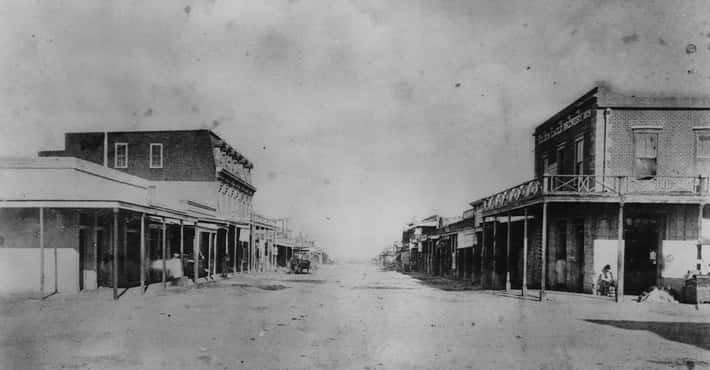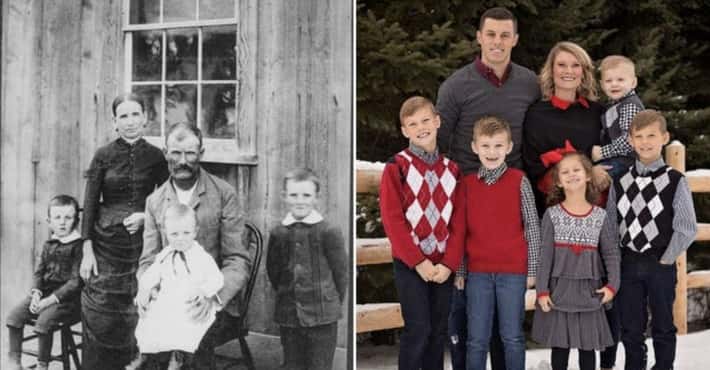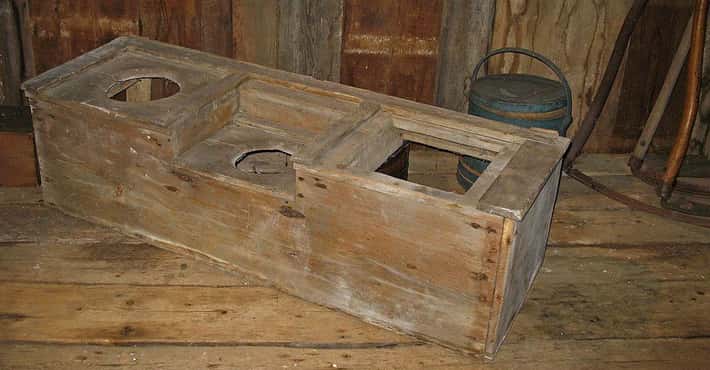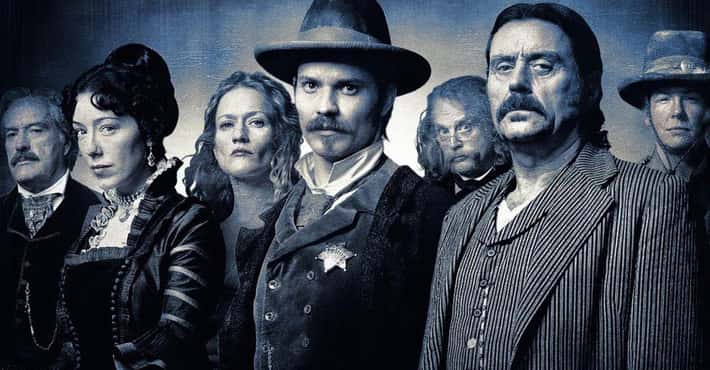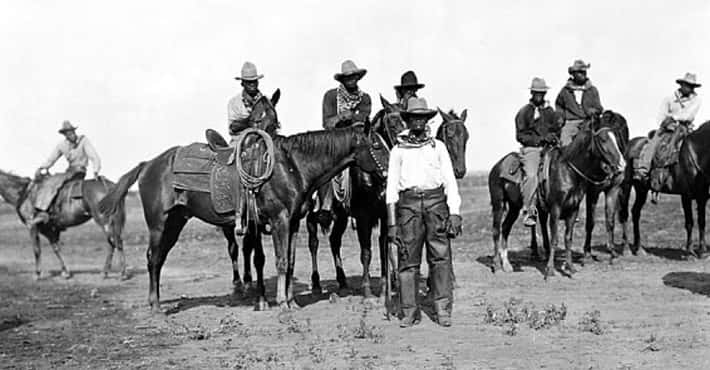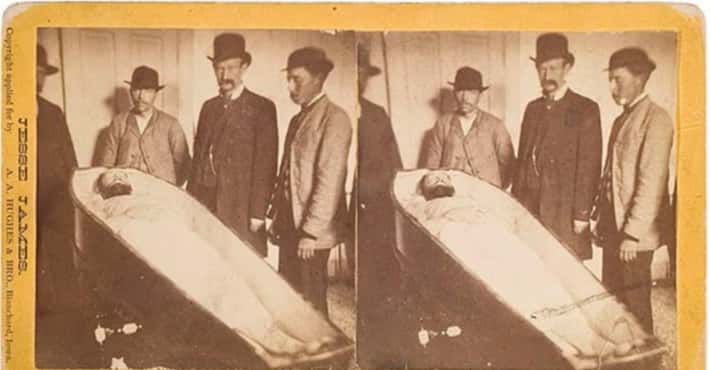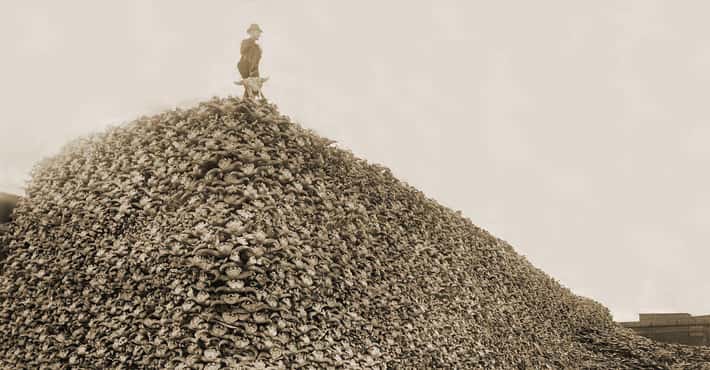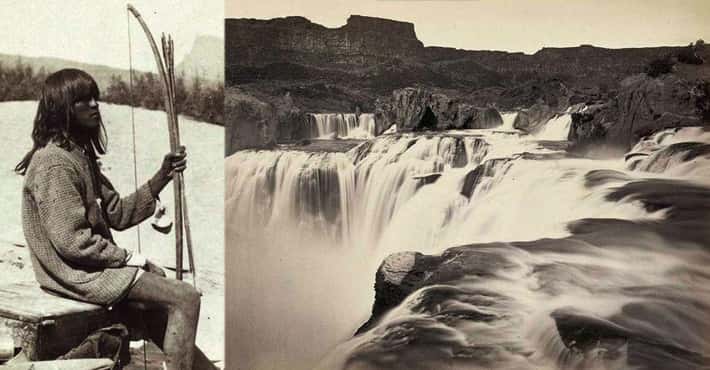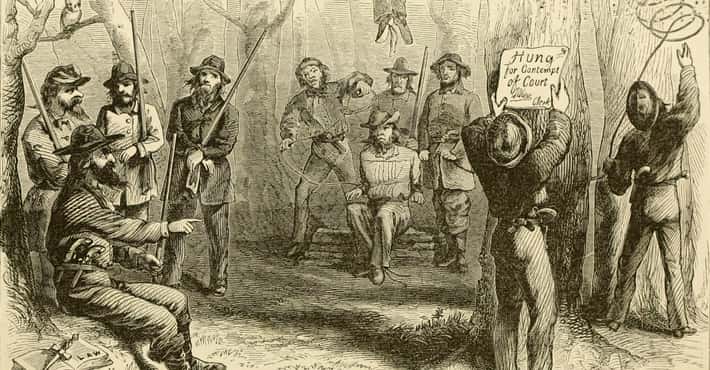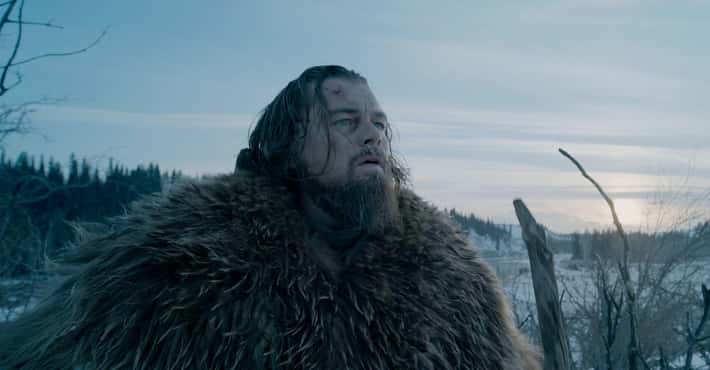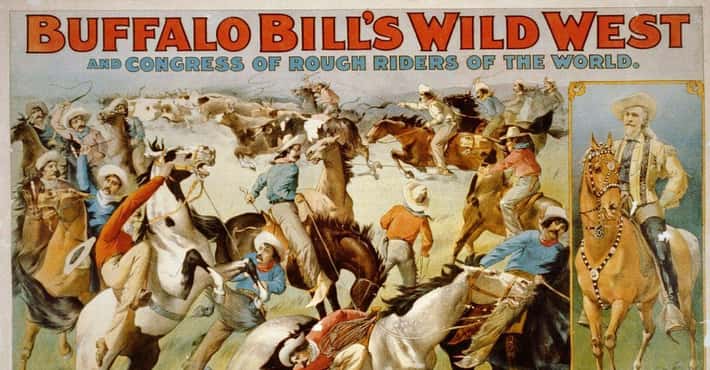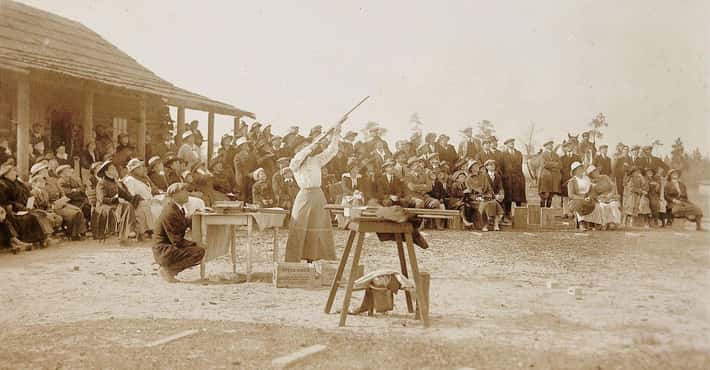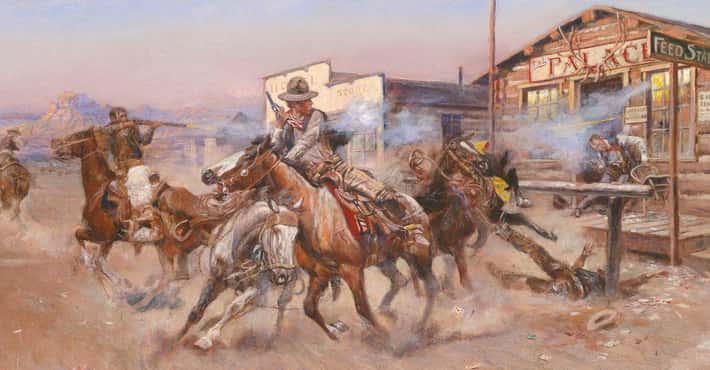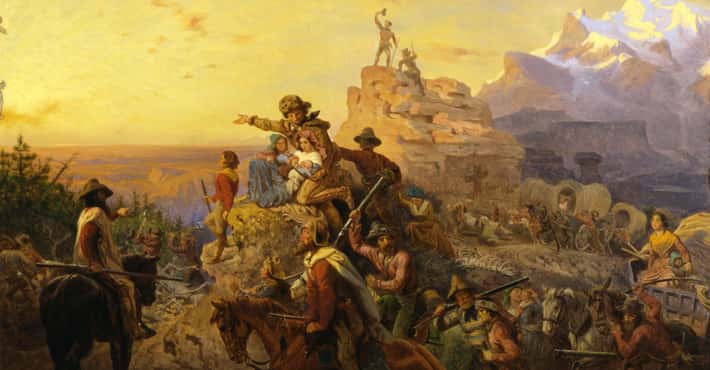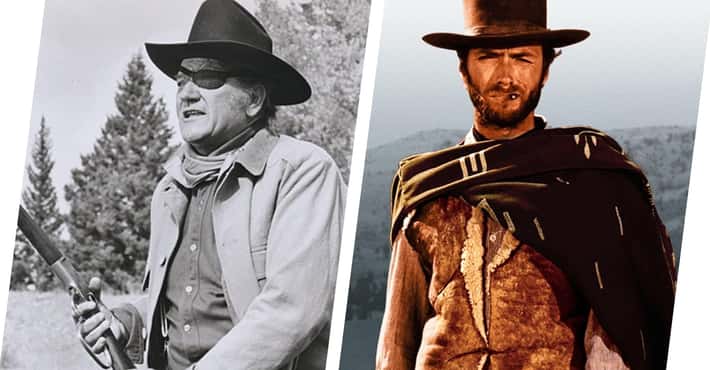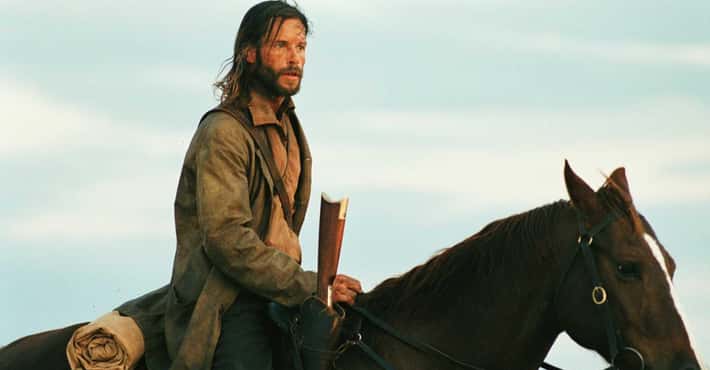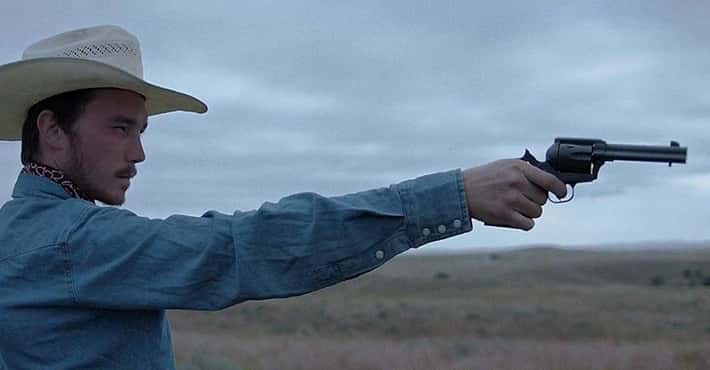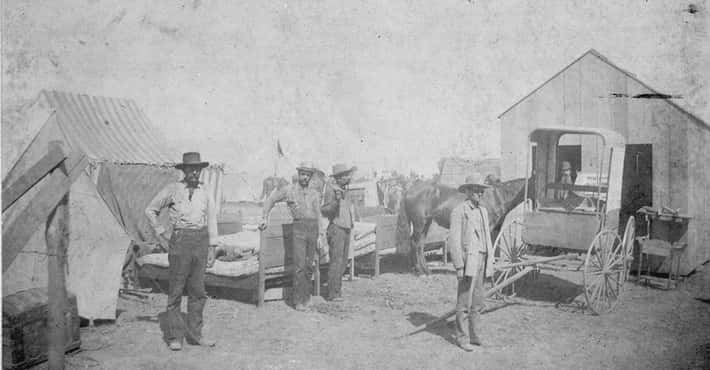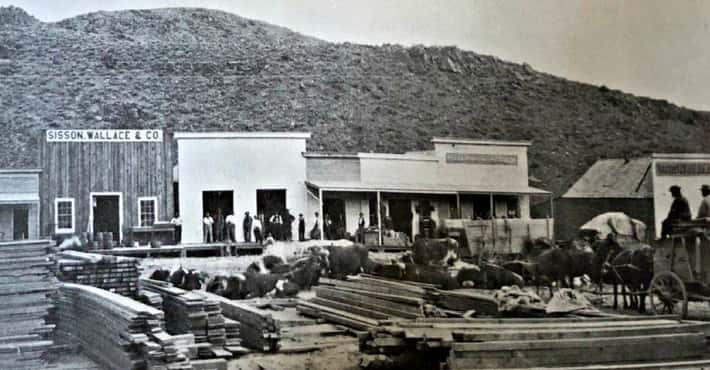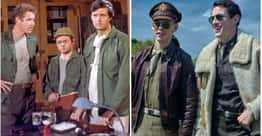
Things We Just Learned About Old West Bounty Hunters
Copy link
Vote up the most remarkable facts about Wild West bounty hunters.
- 1308 VOTES
John Riley Duncan Was A Texas Ranger Who Assisted In Capturing John Wesley Hardin
John Riley “Jack” Duncan was 26 when he joined the Dallas police force in 1876. The next year, the Texas Rangers recruited him to work as an undercover agent, specifically to gather information leading to the capture of notorious outlaw John Wesley Hardin. If Duncan was successful, he would receive a share of the $4,000 reward.
The Texas Rangers believed Hardin might be hiding in Gonzales County. Using the pseudonym of “Williams,” Duncan moved to the county and worked as a laborer and handyman. He made sure to pledge loyalty to people in Hardin's circle, even befriending Neal Bowen (the outlaw's father-in-law), who took “Williams” in as a boarder.
When Duncan tricked Bowen into writing a letter to Hardin, he discovered the outlaw was hiding out in Pollard, AL, under the pseudonym "J.H. Swain"." The undercover Duncan then arranged to have the Rangers arrest “Williams” to prove he was a member of Hardin's gang.
Armed with arrest warrants for both Hardin and “Swain,” Duncan and fellow Texas Ranger John Armstrong traveled to Alabama, where the former learned “Swain” was heading to Pensacola, FL, to do some gambling. On August 23, 1877, Duncan, Armstrong, Escambia County Sheriff William Henry Hutchinson and Sheriff's Deputy A.J. Perdue arrested Hardin on a train bound for Pensacola.
Duncan and Armstrong split the $4,000 reward, but the former quit the Texas Rangers after just four months to work as a private detective and bounty hunter in Dallas. He was haunted by dreams of being shot to death by Hardin or one of his friends, as the imprisoned outlaw had vowed to get his revenge on the man who had been largely responsible for his capture.
He did end up being shot, but not by Hardin or any of his friends. Instead, in February 1878, brothel worker Hattie Washburn (AKA Hattie Bates) shot Duncan with his own gun. The bullet lodged in his lung; despite having a silver tube inserted in his throat so he could speak and breathe, Duncan continued with his work for many years. He perished in a car accident in 1911.
- Photo: Photography Studio / Phillips Collection / Wikimedia Commons / Public domain2172 VOTES
The Notorious Dunn Brothers Dabbled In Robbery And Cattle Rustling
Bee, Calvin, Dal, George, and Bill Dunn were five brothers from Pawnee, OK. They ran a boarding ranch near Ingalls, OK, where, legend has it, they allowed outlaws to hide out; the brothers also occasionally robbed or killed the travelers who stayed there. In addition, they ran a meat market in Pawnee - a convenient way for them to get rid of the cattle they occasionally rustled. According to one account, the Dunns made a deal with lawmen in which they agreed to help capture members of the outlaw Doolin-Dalton Gang in exchange for getting the cattle rustling charges against them dropped.
Their younger sister Rose had become romantically involved with George “Bittercreek” Newcomb, and on May 2, 1895, he and fellow Doolin-Dalton member Charlie Pierce arrived at the ranch to see her. Conflicting reports exist about what happened next; depending on the source, the brothers either tipped off the law, who then killed the outlaws, or the Dunn brothers terminated Newcomb and Pierce themselves. Either way, Pierce and Newcomb had perished, and the Dunns collected the bounty, which reportedly was $5,000 for each man.
On August 25, 1896, Bill Dunn - the oldest and the leader of his brothers - led US Deputy Marshal Heck Thomas and his posse to where Bill Doolin was hiding; when the outlaw refused to surrender and opened fire, Thomas killed him (some sources claim Dunn was actually the one to shoot the outlaw).
By the latter part of 1896, locals had begun complaining about the brothers' criminal activities; Deputy Sheriff Frank Canton (a former outlaw himself), who had already tried to arrest the Dunns for the slayings of Pierce and Newcomb but had been unable to get the charges to stick, decided to investigate these complaints. This enraged Bill Dunn, who vowed to kill Canton on sight. On November 6, 1896, he confronted the lawman coming out of a restaurant; he drew his gun but Canton reacted more quickly, killing Dunn in what ended up being ruled self-defense.
This ended the brothers' work as bounty hunters.
- Photo: Unknown / Wikimedia Commons / Public domain3225 VOTES
Most Bounty Hunters Were Peace Officers Or Worked For Detective Agencies Or Private Enterprises Like Wells Fargo
Although literature and films often portrayed bounty hunters as lone wolves or as a group of gunfighters unaffiliated with any official organization, in reality most were lawmen looking to supplement their low pay (Lincoln County Sheriff Pat Garrett collected a bounty in 1881 when he killed Billy the Kid) or worked for detective agencies such as Pinkerton National Detective Agency. Some also worked for banks or for train operators.
In an analysis of 255 gunfighters, only three were found to be the type of bounty hunter featured in movies and TV - and even those only did their “hunting” on an occasional basis. Most rewards were too small and/or offered too infrequently for anyone to make a consistent living at it.
In the case of Garrett, New Mexico's Governor Lew Wallace placed a newspaper ad offering a reward for Billy the Kid's capture:
BILLY THE KID
$500 Reward
I will pay $500 reward to any person or persons
who will capture William Bonny, alias The Kid, and
deliver him to any sheriff of New Mexico.
Satisfactory proofs of identity will be required.
LEW WALLACE, NEW MEXICOWhen Garrett attempted to claim the bounty, however, Wallace tried to tell him he wasn't entitled to it, claiming it was a “personal offer” that wasn't binding to the territory itself. Garrett persisted and eventually received the reward; but not before local citizens, disgusted by the governor's refusal to honor the offer, raised $1,150 and sent it to Garrett.
- Photo: Charles Baehr Gatewood / Wikimedia Commons / Public domain4263 VOTES
Mickey Free Was Kidnapped By Apaches As A Boy; When The Military Tried To Rescue Him, They Sparked The Chiricahua Wars
Born in Mexico circa 1848, Felix Telles (who later went by Mickey Free) was raised in Arizona Territory. When he was 12 years old, he was allegedly kidnapped by the Pinal Apache. In late January 1861, a US military unit led by 2nd Lt. George N. Bascom embarked on a search for the boy. A meeting was arranged between Bascom and Cochise, chief of the Chiricahua Apache, whom the military mistakenly believed had kidnapped Telles.
When Cochise denied any knowledge of the boy, Bascom threatened to hold the Chiricahua Apache leader until Telles was released. Although Cochise escaped, Bascom imprisoned the other Apache in the party. Cochise then killed three hostages taken from a nearby stage station while Bascom hanged Cochise’s brother and two nephews. This incident destroyed the fragile peace between the American military and the Chiricahua Apache.
Raised as an Apache, Telles was finally retrieved years later when US soldiers attacked the Apache camp where he was living. He was given the new name of Mickey Free, and in 1874 was hired as an interpreter because he was fluent in Apache and spoke Spanish, although he evidently did not speak English. Within a few years he had become a famous Apache scout working with the US military. Donald McIntosh, the biracial son of another scout, described Free this way in the 1880s:
I was only fifteen years old then and I had never seen anything quite like Mickey Free. He had big cavalry boots on, the kind that came up high above the knee… and a big pistol belt around his waist and in it he carried two big dragoon pistols. He presented a fine figure in the prime of his life.
In addition to being a scout, Free did some occasional bounty hunting. Among those he went after was the Apache Kid, with some reports claiming that Free killed the man.
- Photo: Photography Studio / Phillips Collection / Wikimedia Commons / Public domain5187 VOTES
Many Bounty Hunters Were More Dangerous Than The Outlaws
While some bounty hunters may have been outstanding citizens who never ran afoul of the law, many others had less-than-sterling reputations. Some could be considered even more dangerous than the outlaws themselves.
Take Henry Newton Brown. In 1882, he became the assistant marshal of Caldwell, KS, and was later promoted to marshal. The Caldwell Commercial labeled him as “cool, courageous and gentlemanly, and free from… vices.” But what neither the newspaper nor the local citizens knew was that Brown was a former outlaw who had been part of Billy the Kid's gang, and in 1878 had ambushed and murdered the sheriff during the Lincoln County (NM) War that broke out among the local ranchers, merchants, and politicians.
Brown's outlaw ways didn't end after he became a lawman. In 1884, he received permission from Caldwell's mayor to track a murderer into Native American territory in the hope of collecting the $1,200 bounty. Instead, he joined forces with the outlaw in an attempted robbery of the Medicine Lodge Bank, killing the manager in the process. The bandits were captured and taken to the Medicine Lodge jail, where an angry crowd chanted “hang them! hang them!” Later that night, a mob broke into the jail, overpowering the sheriff and deputies. Brown was shot to death as he attempted to escape.
Then there was Timothy “Longhair Jim” Courtright. In 1876, he became the first elected marshal in the history of Fort Worth, TX, and is credited with reducing the murder rate in the city by half. But he also made some enemies among saloon and gambling hall owners who didn't appreciate being railroaded into buying his “protection” services. This would eventually lead to a quarrel, a duel, and his demise.
Perhaps the most notorious bounty hunter was Tom Horn. In the late 1880s, Pinkerton National Detective Agency hired him as a bounty hunter and tracker, but he only spent a brief period with the firm. He then became a gun for hire and was thought to be responsible for the murders of more than a dozen people. Ironically, Horn was hanged in 1903 after being convicted of a murder many historians believe he did not commit - that of 14-year-old Willie Nickell, who was shot in the back on July 18, 1901.
- Photo: Unknown / Wikimedia Commons / Public domain
Jesse James and his older brother Frank were two of the most infamous outlaws in the history of the Old West. After the Civil War they were members of several groups of outlaws, primarily the James-Younger Gang, which was based in Missouri and operated from about 1868 to 1876. The group became known for its bank and train robberies as well as for committing brutal murders. It dissolved in 1876 after an unsuccessful robbery attempt in Northfield, MN, that led to several members being killed our arrested.
The James brothers escaped and continued their unlawful ways for several more years. In 1882, Thomas T. Crittenden, the Governor of Missouri, offered a reward of $25,000 for the capture of Jesse - dead or alive - and a $15,000 reward for Frank. Adjusting for inflation, that $40,000 total would be equal to $2.4 million in 2020.
Crittenden allegedly had held secret meetings with Bob Ford, a new recruit to the James Gang who had been invited to live with Jesse and his family. On April 3, 1882, Ford dispatched Jesse by shooting him in the back of the head while the outlaw was dusting a picture.
The $25,000 reward is thought to be one of the largest for an outlaw.
(If we go outside the Old West, the sum offered for the capture of President Abraham Lincoln's assassin was even larger. On April 20, 1865, the US War Department offered a reward for John Wilkes Booth and accomplices David Herold and John Surratt - $50,000 of which was for Booth himself. Adjusting for inflation, that $100,000 would be equivalent to approximately $9.8 million in 2020.)
- Photo: Unknown / Wikimedia Commons / Public domain7196 VOTES
Charlie Siringo Was A Pinkerton Detective Who Went Undercover And Successfully Infiltrated Butch Cassidy's 'Wild Bunch' Gang
Charlie Siringo is among the more famous 19th-century detectives, having worked much of his life for Pinkerton National Detective Agency. Prior to becoming a detective, he was a cowboy; in the 1870s he began working for the LX Ranch. During his time there he led a posse looking for Billy the Kid after the outlaw stole some of the ranch's cattle.
In 1884, Siringo married and gave up being a cowboy to become a merchant. But in 1886 he moved to Chicago and got a job with Pinkerton, using as his reference Pat Garrett, a man of many courageous hats, including sheriff, customs agent, and killer of Billy the Kid.
Siringo would remain a detective for the next 22 years, making hundreds of arrests. He often worked undercover; in the late 1890s he infiltrated Butch Cassidy's “Wild Bunch” by posing as a gunman named Charles L. Carter, who was allegedly on the lam for murder. In 1899, after the Wild Bunch committed the Wilcox Train Robbery, Siringo was assigned to work with another Pinkerton agent named Tom Horn to nab the gang. Their efforts led to the capture of several Wild Bunch members, including Kid Curry. However, Cassidy and the Sundance Kid escaped to Bolivia, where they allegedly were later killed by Bolivian soldiers.
In 1907, Siringo took his well-earned retirement from Pinkerton.
- Photo: Alexander Gardner / Wikimedia Commons / Public domain8200 VOTES
The 1872 Supreme Court Case Taylor v. Taintor Arguably Said Bounty Hunters Could Chase A Fugitive Into Another State And Break Into Their House
For nearly 150 years, bounty hunters, lawmen, and bail bondsmen have pointed to a single paragraph in the majority opinion of an 1872 Supreme Court case to show what rights they have when it comes to pursuing and capturing a fugitive.
Taylor vs. Taintor involved an $8,000 cash bond on Edward McGuire, who was charged with grand larceny. While awaiting trial in Connecticut, he returned home to New York. But unknown to the bail bondsman in Connecticut, McGuire was wanted in Maine on another felony charge. Upon request from the Governor of Maine, the Governor of New York extradited McGuire to Maine, where he was convicted and imprisoned on a burglary charge. When he failed to appear in court for his trial in Connecticut, the bail was forfeited.
The Connecticut bail bondsman looked for relief from the forfeited bond on the grounds that it wasn't his fault McGuire failed to appear, but because McGuire had been extradited to Maine, which would be considered an intervening "act of law" under the Extradition Clause of the Constitution. The Supreme Court, however, ruled that the bail bondsman was responsible for securing McGuire's appearance and was not protected by the Extradition Clause.
Although it isn't the actual holding of the court, and it holds no binding precedential value, bounty hunters still point to one paragraph in the majority opinion of Taylor v. Taintor to help guide them. It reads in part:
When bail is given, the principal is regarded as delivered to the custody of his sureties. Their dominion is a continuance of the original imprisonment. Whenever they choose to do so, they may seize him and deliver him up in their discharge; and if that cannot be done at once, they may imprison him until it can be done. They may exercise their rights in person or by agent. They may pursue him into another State; may arrest him on the Sabbath; and if necessary, may break and enter his house for that purpose.
- Photo: Thomas M. Easterly / Wikipedia / Public domain9123 VOTES
James Kirker Worked With Mexico To Capture And Kill Indian Warriors
James Kirker was among the more infamous bounty hunters. Born in Ireland, he came to the US at 16 and worked as a privateer and a merchant before spending about a decade in New Mexico trapping and trading beaver pelts, mining, and trading livestock with the Apaches.
In 1835, Kirker became a naturalized Mexican citizen, and in 1839 he entered into the first of his four contracts with the governor of Chihuahua to fight the Apache, Comanche, and Navajo who were raiding the northern part of Mexico. He put together a core group of about 25 fighters dubbed “Sahuanos,” or Shawnees, despite being a mixed group of White Americans, Mexicans, escaped slaves, and members of the Delaware, Creek, and Shawnee tribes. Kirker was promised $100,000 for his first contract, and for the following three contracts was paid according to how many prisoners and scalps he delivered.
He was quite successful in this work, but by 1846 the government of Chihuahua was no longer able to pay him for Apache scalps. Instead, it offered him a position in the Mexican Army, with the rank of colonel. He refused, instead joining the 1st Regiment of Missouri Mounted Volunteers to fight in the Mexican American War. This act led to the Mexican government declaring him a traitor and putting a bounty of 10,000 pesos on his head.
Kirker survived the conflict and later settled in California, where he passed in 1852.
- Photo: Unforgiven / Warner Bros.10141 VOTES
The Term ‘Bounty Hunter’ Didn't Gain Its Current Meaning Until The 1950s
From Henry Fonda in The Tin Star to Clint Eastwood in Unforgiven, bounty hunters have played important roles in many a Hollywood Western. These films, as well as literature and news reports, are responsible for perpetuating many myths about the Wild West. They also appear to be responsible for the term “bounty hunter” to describe the (mainly) male lawmen and gunfighters who tracked, captured, and sometimes dispatched all types of criminals.
The term “bounty” dates back to the early 1300s. Its original meaning was “kindness” or “goodness.” It wasn't until the early 1700s that the word took on the meaning of a “reward” - but in the form of a bonus given to men to entice them to join a country's army or navy. By the 1800s, the term “bounty hunter” was in use for people who received bonuses for collecting animal pelts or dead birds - but not for those tracking and capturing outlaws.
American author Norman A. Fox, who specialized in Western stories, used “bounty hunter” with its present-day meaning in 1953, followed in 1954 by American novelist and screenwriter Elmore Leonard.
- Photo: Frederick M. Coffin (engraved by Nathaniel Orr) / Wikimedia Commons / Public domain11131 VOTES
The Fugitive Slave Acts Led To Some Bounty Hunters Kidnapping Free Black People And Selling Them Into Slavery
The US government enacted its first Fugitive Slave Act in 1793, which gave local governments the right to seize and return escaped enslaved people to their “owners.” The law also stated that slave owners and their agents had the right to search for escapees in “free” states. If a suspected escapee was captured, the hunter then would then go before a judge and provide evidence that the person was enslaved. If the court was satisfied with the proof, the owner could then take the escapee back to his or her own state. The act also levied a $500 fine against anyone found to have helped the escapee.
There was widespread resistance to the act, especially in northern states, where slavery had been abolished. Several of these states refused to enforce the Fugitive Slave Act and even passed Personal Liberty Laws that gave accused runaways the right to a jury trial. These laws also protected free Black people, many of whom had been abducted by bounty hunters and sold into slavery.
This type of shady business was described by Solomon Northup in his memoir Twelve Years a Slave, which recounted how he was born as a free Black man in New York, but in 1841 was tricked into going to Washington, DC, where he was kidnapped and then sold as an enslaved person.
The legality of the Personal Liberty Laws was challenged in the 1842 Supreme Court case Prigg v. Pennsylvania, which revolved around a bounty hunter named Edward Prigg, a Maryland resident convicted of kidnapping someone he thought was an escaped enslaved person. The Supreme Court ruled in favor of Prigg, setting the precedent that federal law superseded any state measures that attempted to interfere with the Fugitive Slave Act.
Despite this ruling, northern states continued to refuse to enforce the act. This led to the US government enacting a second Fugitive Slave Act in 1850; this new law strongly compelled citizens to assist in the capture of escaped enslaved people. It also denied escapees the right to a jury trial and increased the penalty for aiding escapees or interfering with the law to a $1,000 fine and six months in jail. It also boosted bounty hunting by placing control of individual cases in the hands of federal commissioners who were paid more for returning a suspected escapee than they were for freeing them.
- Photo: Unknown / Wikimedia Commons / Public domain12120 VOTES
Most Bounties Were For A Few Hundred Dollars, Not The Thousands We See In Pop Culture
Although Western movies may suggest otherwise, being a bounty hunter wasn't the best way to get rich.
Although large bounties existed for some of the more notorious outlaws, like the $40,000 collective reward for Jesse and Frank James, and $15,000 for the Dalton Gang, most payouts were more modest. For example, $5,000 bounties were offered for Billy the Kid or Cole Younger, and Butch Cassidy was only worth $4,000. Even those sums were good, however, as most rewards were for less than $100.














